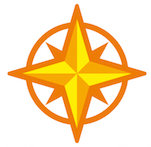 (Photo credit: Stanford OTL)
(Photo credit: Stanford OTL)
- Written by Stanford News
COVID-19 Technology Access Framework
A technology licensing framework has been developed by Stanford University, Harvard University, and the Massaschusetts Institute of Technology. To address the global COVID-19 pandemic, these three institutions developed and are implementing technology transfer strategies to allow for and incentivize rapid utilization of available technologies that may be useful for preventing, diagnosing, and treating COVID-19 infection during the pandemic. The three original institutions have committed to a set of guidelines around patenting and licensing strategies to facilitate rapid global access, and several other institutions have also joined in their adoption of the framework since its release.
Megan Nicholson, Program Officer of the Government-University-Industry Research Roundtable (GUIRR) recently conducted a webinar to discuss the COVID-19 Technology Access Framework objectives and participants with the Executive Director of Stanford's Office of Technology Licensing. Please listen to the webinar here.
The Framework participants have documented their commitment to:
- 1. implementing tech transfer strategies to facilitate rapid global access
- 2. facilitate alignment of all stakeholders including sponsors to facilitate broad and rapid access to technologies
- 3. making transactions top priority and minimize administrative burdens
"Many of Stanford's faculty have pivoted to working on COVID-19 topics. We began to receive our first wave of resulting inventions and product designs. In discussion with Stanford leadership we decided that we should issue our own statement of guiding principles to message to our community how we would be approaching technology transfer during this public health crisis," said Karin Immergluck, Executive Director of the Office of Technology Licensing at Stanford University. "At this point we need to really focus our efforts ... this framework messages to our local community that anything COVID-19-related will take top priority over other any projects."
As well as Stanford, Harvard, and MIT, the participants include: Broad Institute of MIT and Harvard, Cornell University, Drexel University, Georgetown University, Memorial Sloan Kettering Cancer Center, Mississippi State University, Northeastern University, Ohio State University, Oregon Health and Science University, Oregon State University, RTI International, University of Arkansas for Medical Sciences, University of Louisiana at Lafayette, University of Maryland College Park, University of Nevada Reno, University of South Alabama, Virginia Commonwealth University, Yale University.
Follow the Stanford COVID-19 Innovations and Pipeline on this page. We will add articles about available technologies from the various Framework participants in upcoming posts.
Read the full article on the Stanford OTL Website.
Visible Legacy Comment
Visible Legacy supports this effort and will do our part by helping universities communicate their COVID-19 related projects and helping Tech Scouts use our tools to find technology and university contacts more quickly. See these posts for more about Visible Legacy and Stanford, Harvard, MIT, and our Advanced Search for COVID-19 technologies.
Additional Info
-
Navigator:
 Explore the map in Navigator
Explore the map in Navigator - Widget:
- Caption: Stanford OTL Available Technologies
Related items
- Unlocking the brain: Peptide-guided nanoparticles deliver mRNA to neurons
- Scientists Get to the Bottom of COVID’s Worst Pediatric Complication
- WSU-inspired national gene-editing task force begins work
- Multi-Tasking Wearable Continuously Monitors Glucose, Alcohol, and Lactate
- Privacy-preserving camera captures only the objects you want
